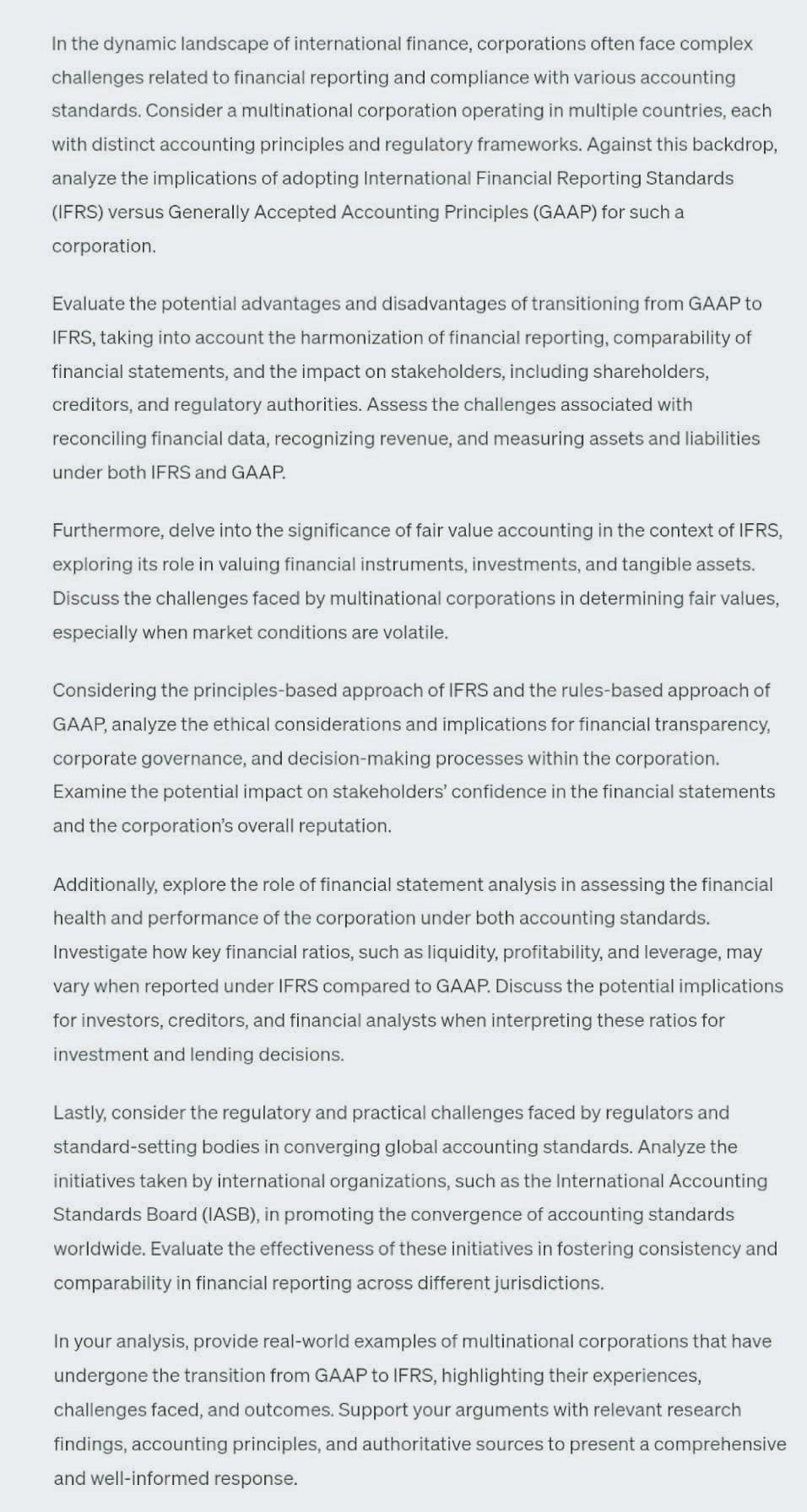Answered step by step
Verified Expert Solution
Question
1 Approved Answer
In the dynamic landscape of international finance, corporations often face complex challenges related to financial reporting and compliance with various accounting standards. Consider a multinational

In the dynamic landscape of international finance, corporations often face complex challenges related to financial reporting and compliance with various accounting standards. Consider a multinational corporation operating in multiple countries, each with distinct accounting principles and regulatory frameworks. Against this backdrop, analyze the implications of adopting International Financial Reporting Standards (IFRS) versus Generally Accepted Accounting Principles (GAAP) for such a corporation. Evaluate the potential advantages and disadvantages of transitioning from GAAP to IFRS, taking into account the harmonization of financial reporting, comparability of financial statements, and the impact on stakeholders, including shareholders, creditors, and regulatory authorities. Assess the challenges associated with reconciling financial data, recognizing revenue, and measuring assets and liabilities under both IFRS and GAAP. Furthermore, delve into the significance of fair value accounting in the context of IFRS, exploring its role in valuing financial instruments, investments, and tangible assets. Discuss the challenges faced by multinational corporations in determining fair values, especially when market conditions are volatile. Considering the principles-based approach of IFRS and the rules-based approach of GAAP, analyze the ethical considerations and implications for financial transparency, corporate governance, and decision-making processes within the corporation. Examine the potential impact on stakeholders' confidence in the financial statements and the corporation's overall reputation. Additionally, explore the role of financial statement analysis in assessing the financial health and performance of the corporation under both accounting standards. Investigate how key financial ratios, such as liquidity, profitability, and leverage, may vary when reported under IFRS compared to GAAP. Discuss the potential implications for investors, creditors, and financial analysts when interpreting these ratios for investment and lending decisions. Lastly, consider the regulatory and practical challenges faced by regulators and standard-setting bodies in converging global accounting standards. Analyze the initiatives taken by international organizations, such as the International Accounting Standards Board (IASB), in promoting the convergence of accounting standards worldwide. Evaluate the effectiveness of these initiatives in fostering consistency and comparability in financial reporting across different jurisdictions. In your analysis, provide real-world examples of multinational corporations that have undergone the transition from GAAP to IFRS, highlighting their experiences, challenges faced, and outcomes. Support your arguments with relevant research findings, accounting principles, and authoritative sources to present a comprehensive and well-informed response
Step by Step Solution
There are 3 Steps involved in it
Step: 1

Get Instant Access to Expert-Tailored Solutions
See step-by-step solutions with expert insights and AI powered tools for academic success
Step: 2

Step: 3

Ace Your Homework with AI
Get the answers you need in no time with our AI-driven, step-by-step assistance
Get Started


